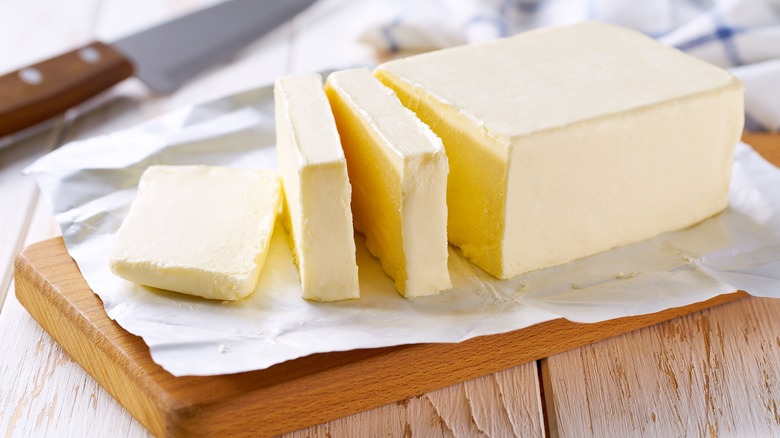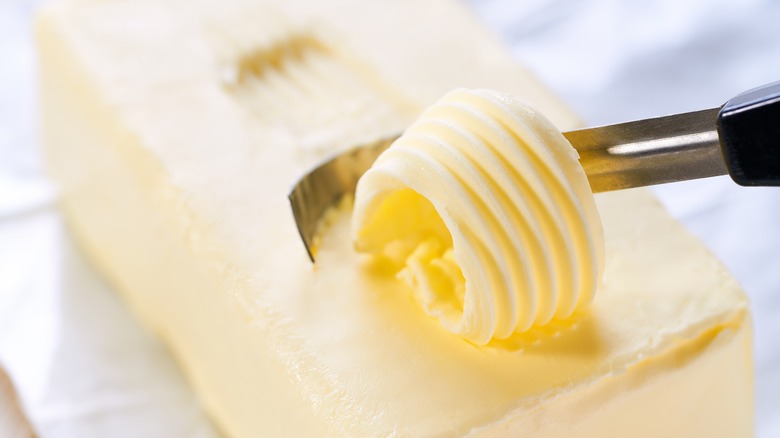The Absolute Worst Way To Soften Butter
Butter is one of the most essential ingredients in your refrigerator. You can toss it into a pan to build flavor while food cooks, or it can be used to add texture and richness to cakes and cookies. It's even a perfect pairing with just a piece of toast. When stored in the refrigerator, butter becomes rock-solid, but many recipes call for it to be softened so that it's easy to work with. That means there are some dos and don'ts when it comes to softening butter — and unless you're in an absurd time crunch, avoid microwaving it at all costs.
Microwaves are finicky. They all behave a little differently, and butter is extremely sensitive to heat. Just a couple of seconds could be the difference between a nicely softened stick of butter and fully melted puddle. Beyond the timing, microwaves don't always heat evenly, so one side of the butter might melt faster than the other. Even worse, butter can blow up when it's overheated, leaving your microwave a mess if you don't get the timing right. Overall, it's certainly a quick method, but it's so hard to guarantee a good result that it isn't worth the hassle. Plus, butter's consistency often matters when cooking, so you don't have much room for error.
Here are the best ways to soften butter
If you consider the best way to be the fastest way, then yes, you can soften butter in the microwave (but don't blame us if it doesn't work out as planned). There are many better options, though they do require a few kitchen tools. Surprisingly, pounding or grating butter are both excellent ways to soften it, but you can also use a stand mixer. You can pound butter the same way you would pound meat — just use a rolling pin instead of a spiked meat cleaver. Wrap the butter in plastic wrap, then pound it out with a rolling pin. Once it's about ¼-inch thick, just let it rest for a few minutes, and you'd be surprised how soft it is. If you have a cheese grater, don't be afraid to grate your butter, either. Unwrap the butter a little at a time, which allows you to hold the wrapped end. Then, just grate it the same way you would grate fresh cheese.
If you have a stand mixer, then beat the butter for a few minutes on medium-low. Not everyone has this appliance, though, so the above methods will also work. Of course, if you have plenty of time, then you can also use the tried-and-true patient method of letting it soften for 30-45 minutes on the kitchen counter.

